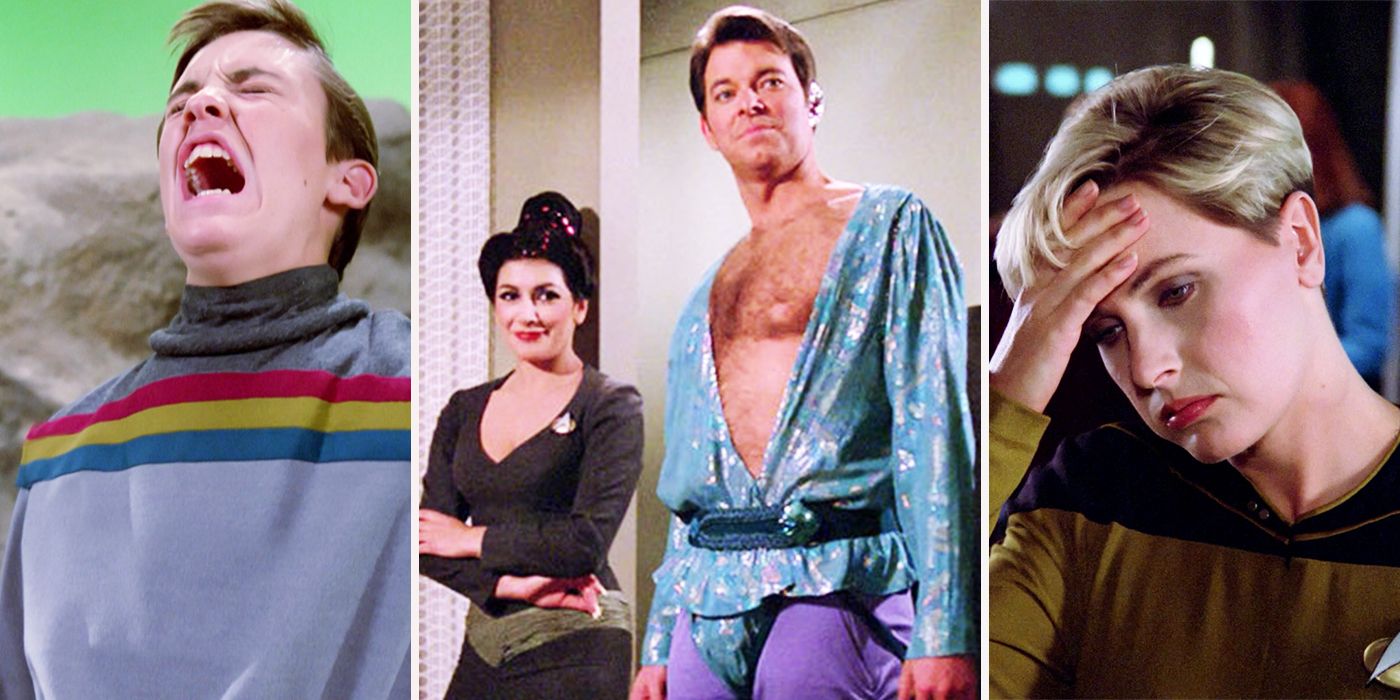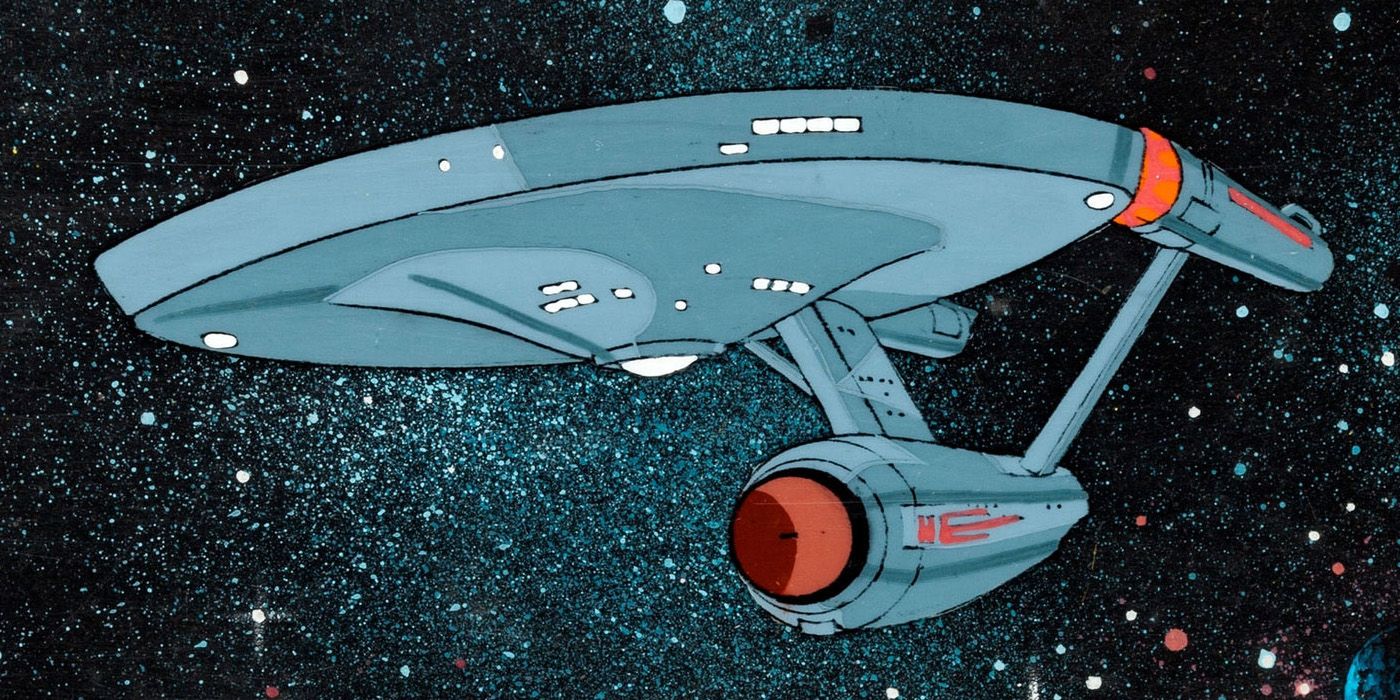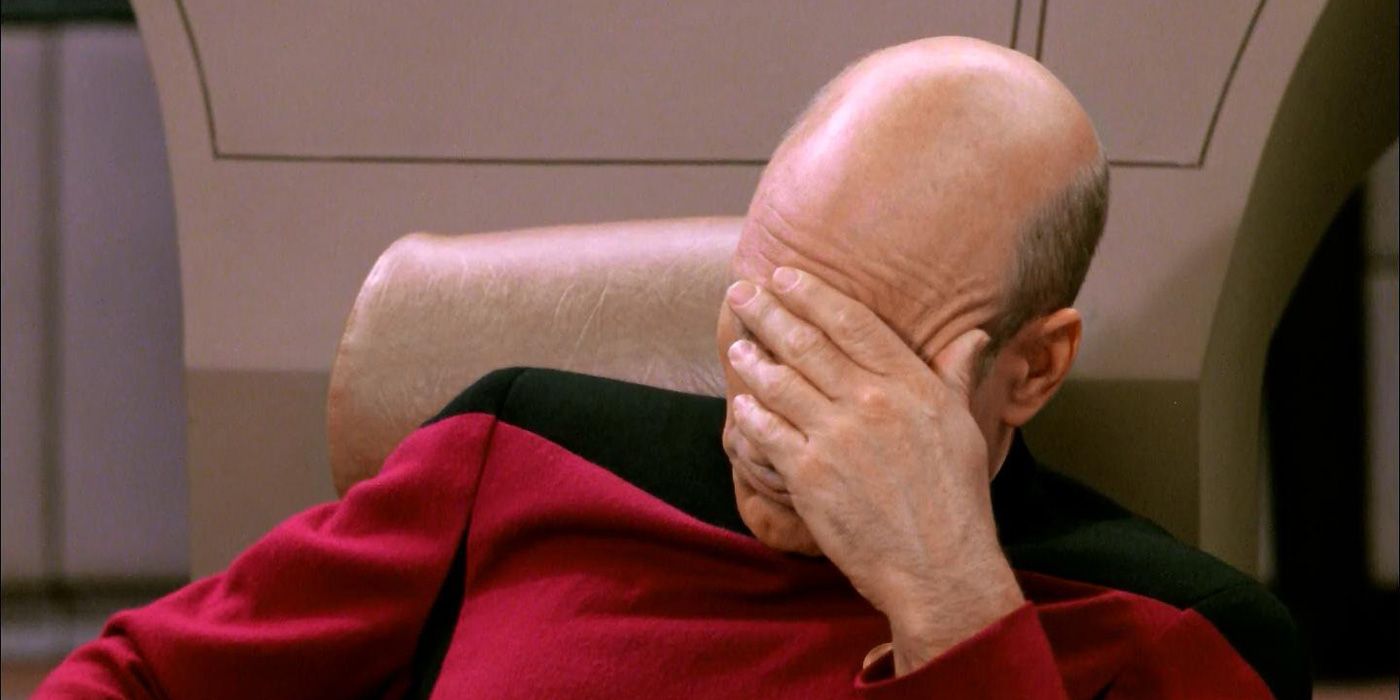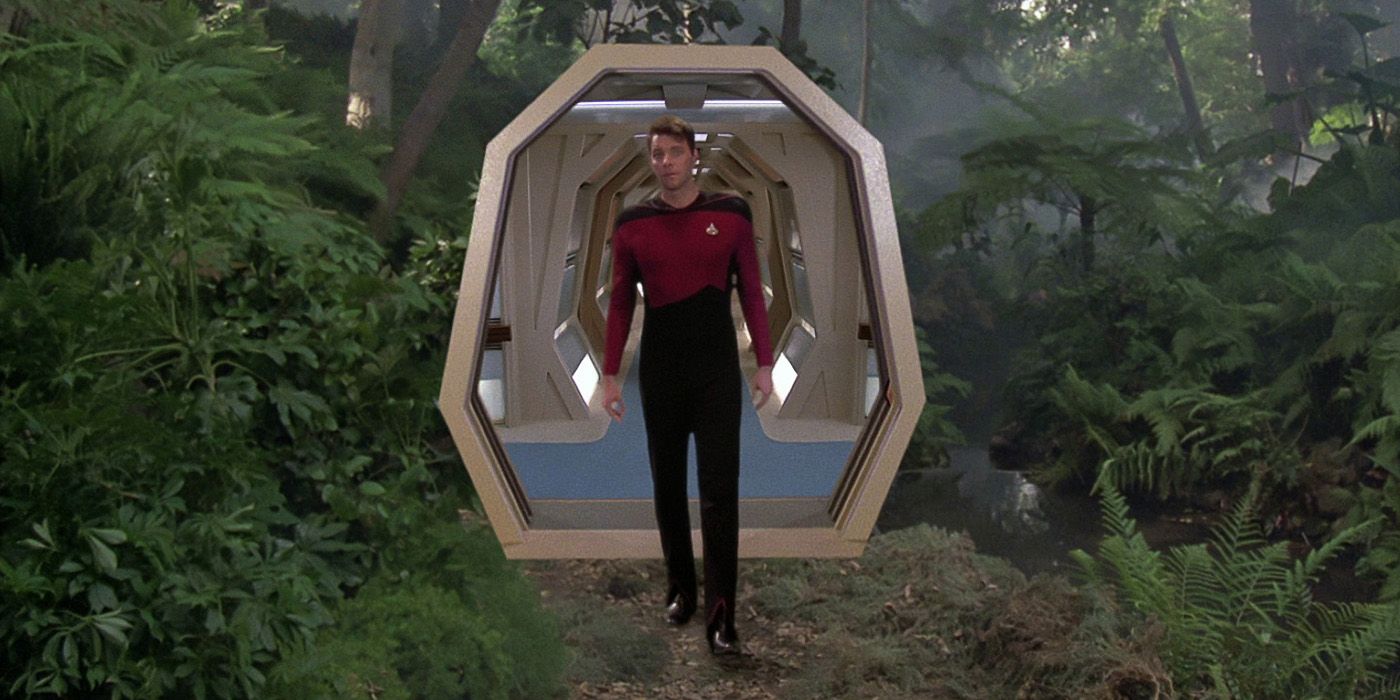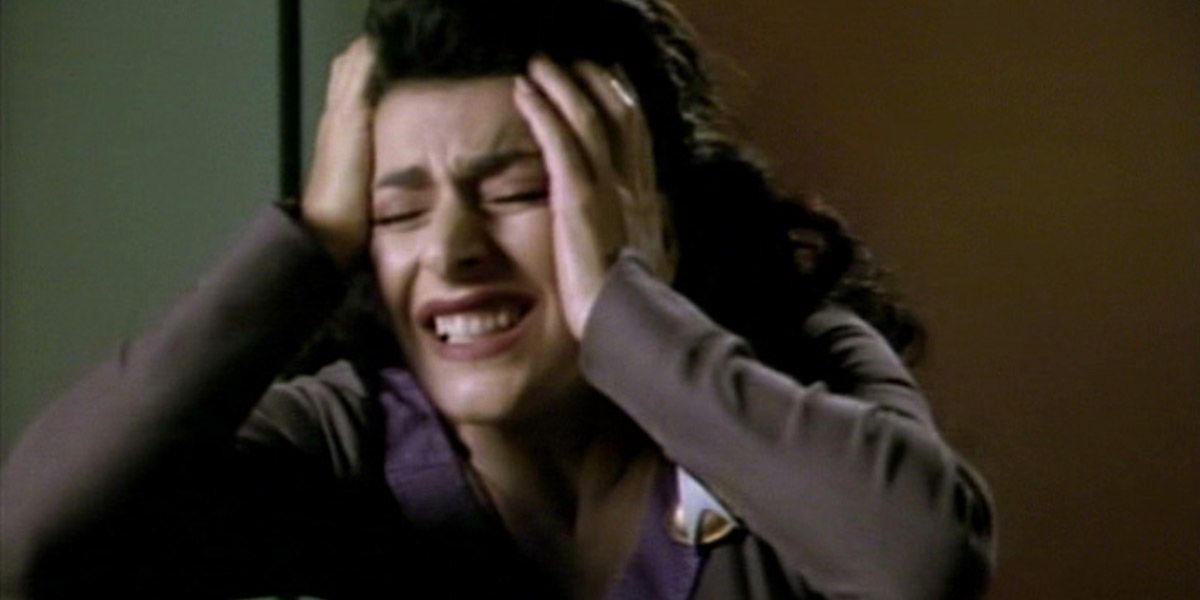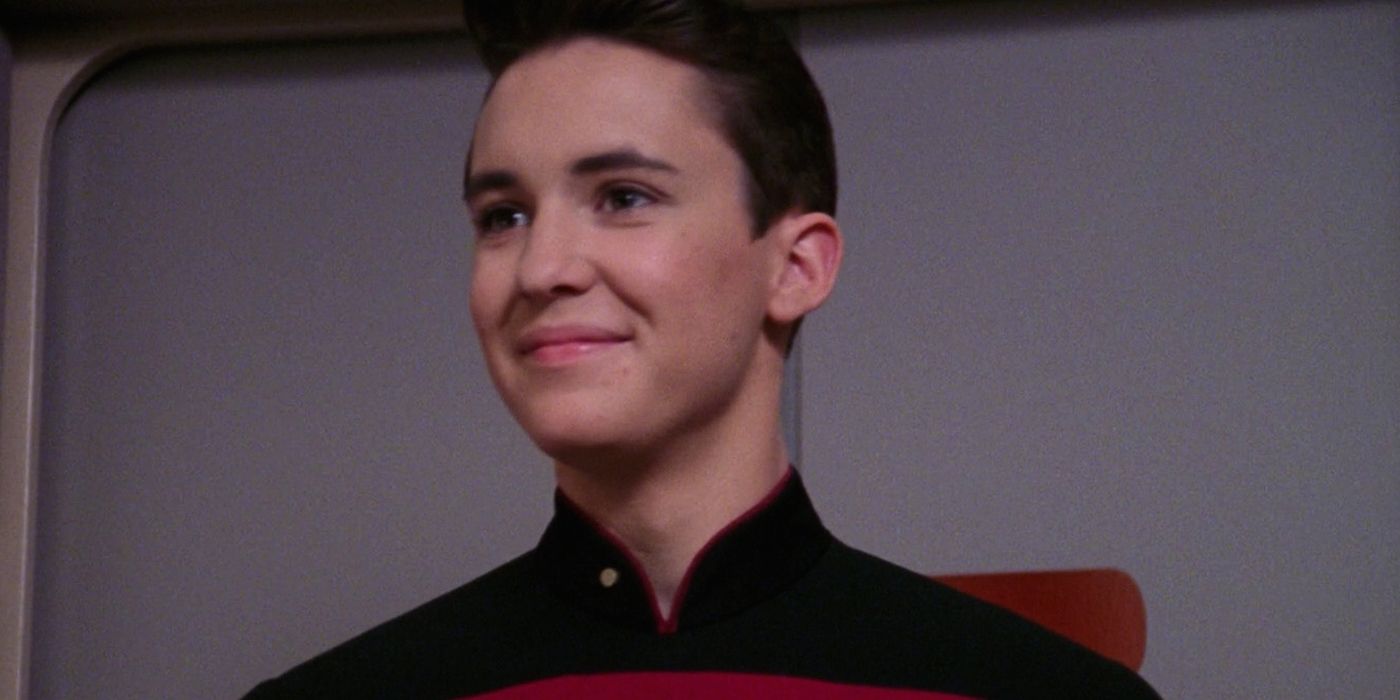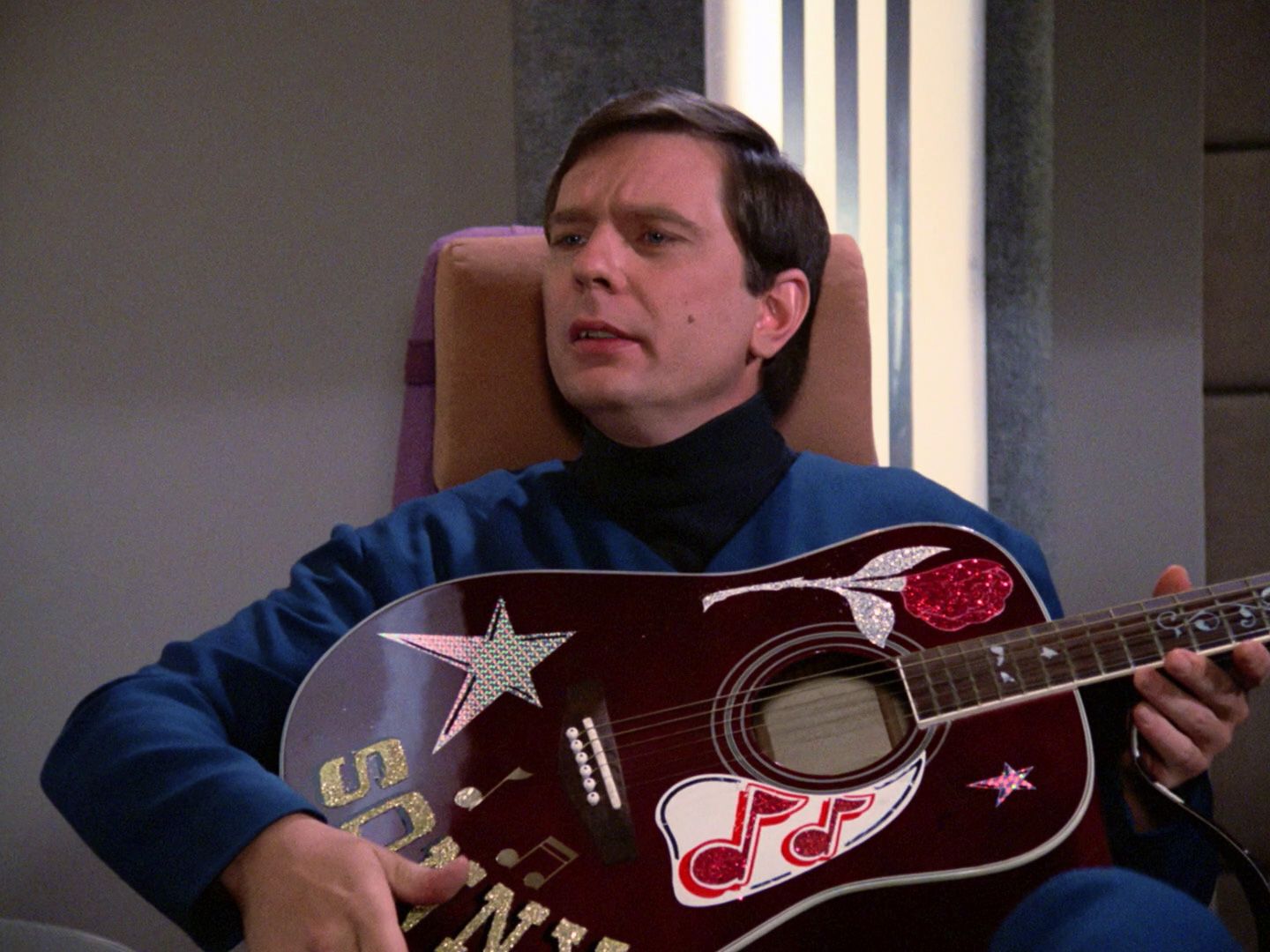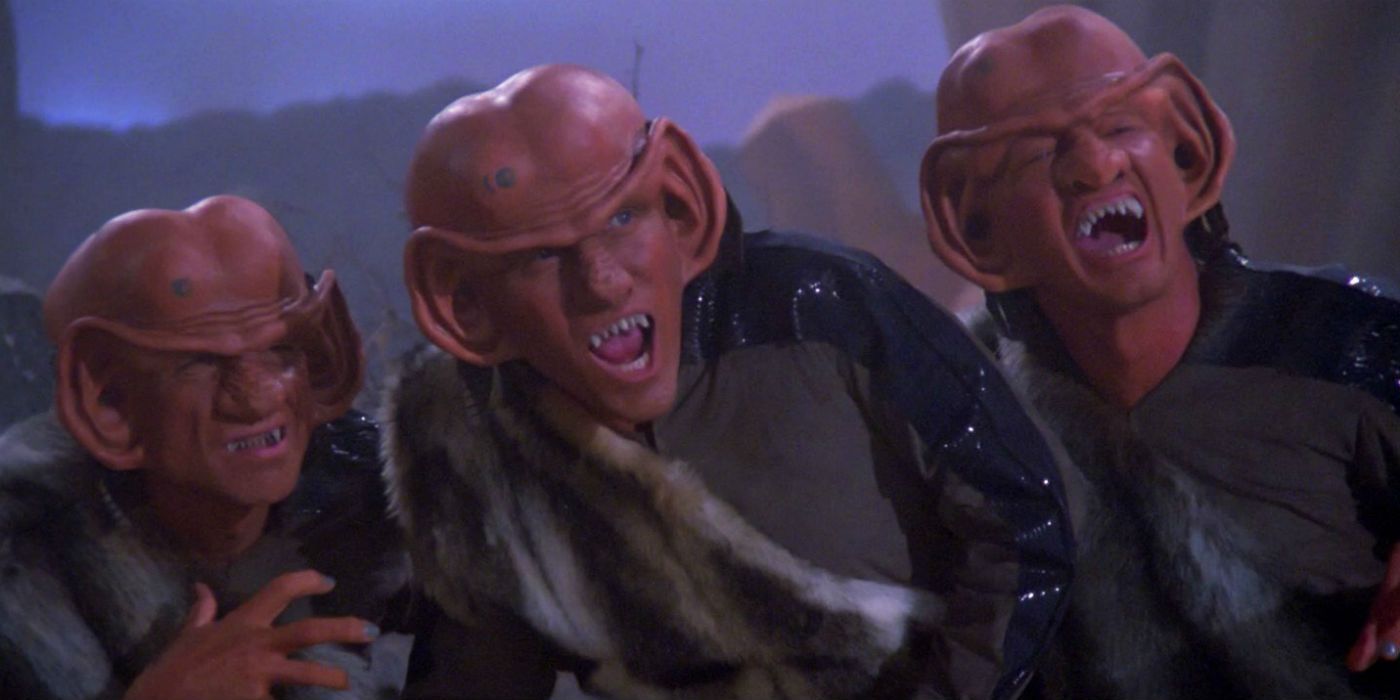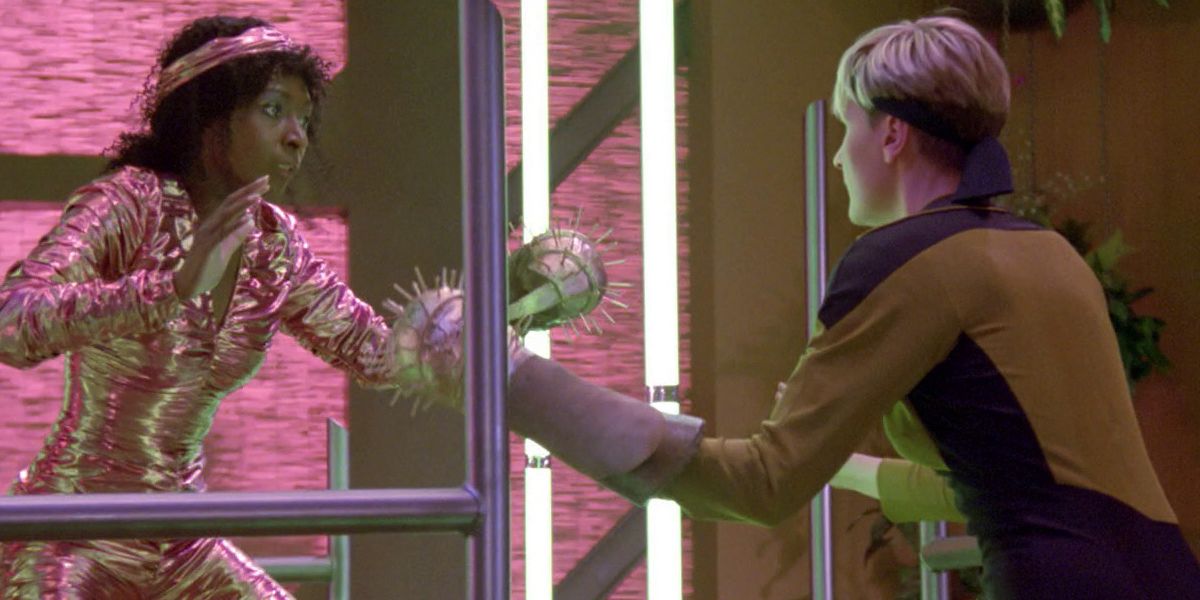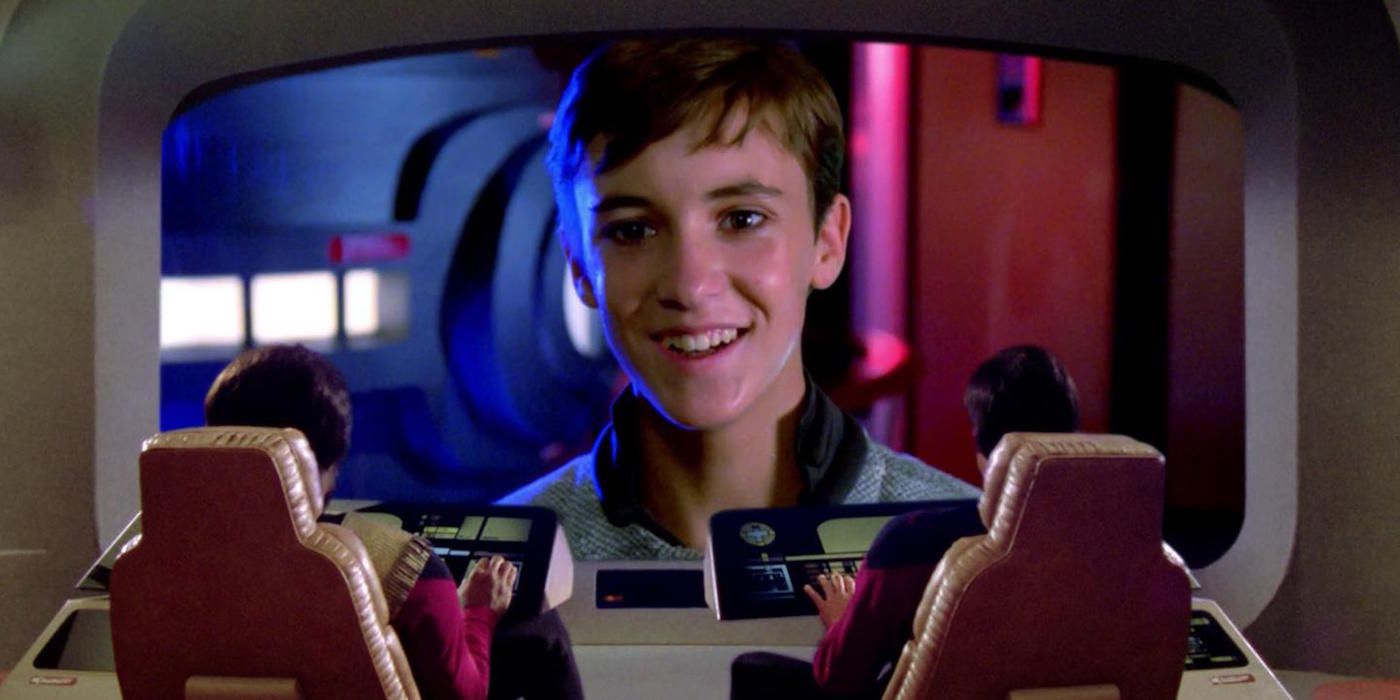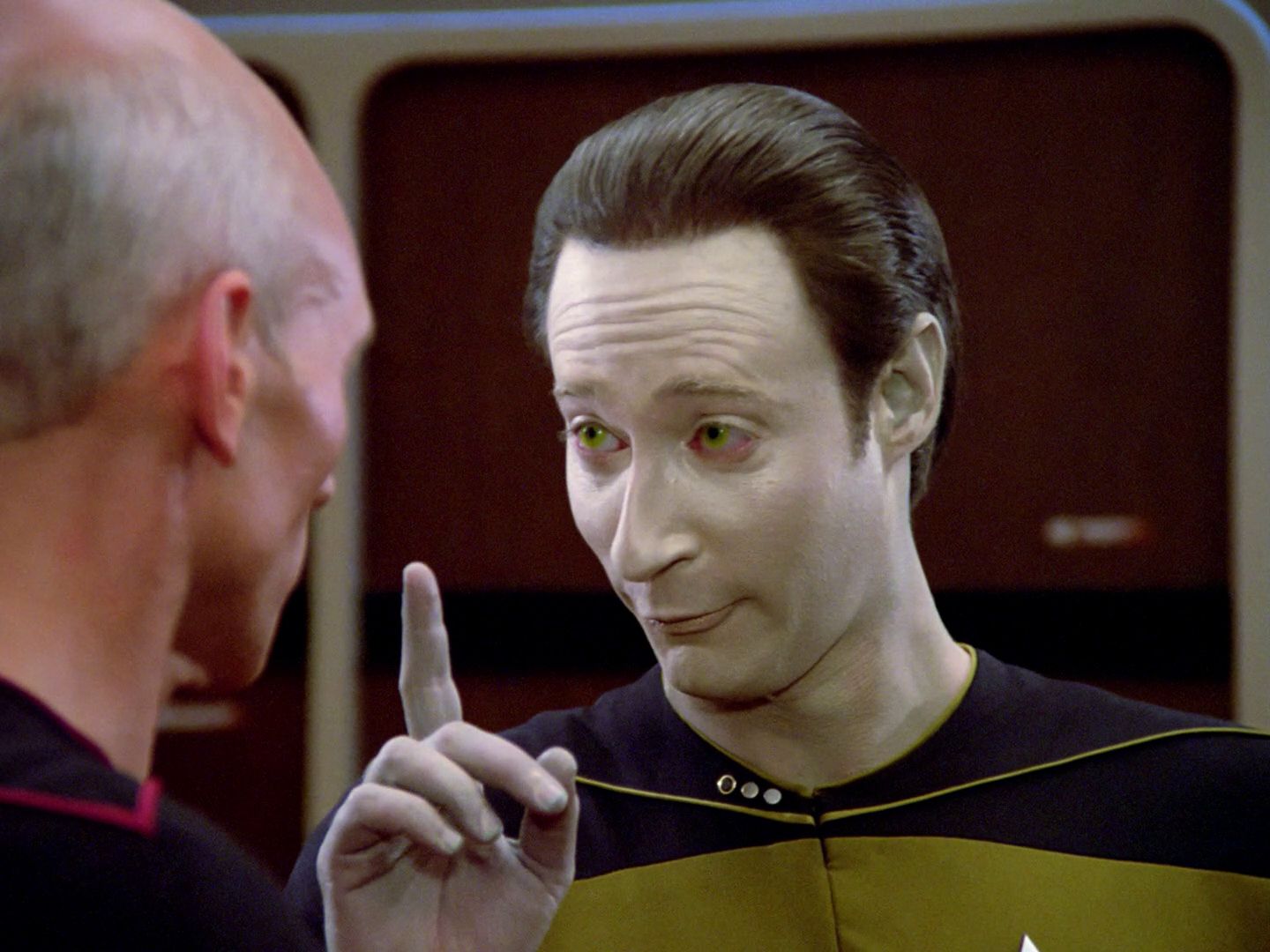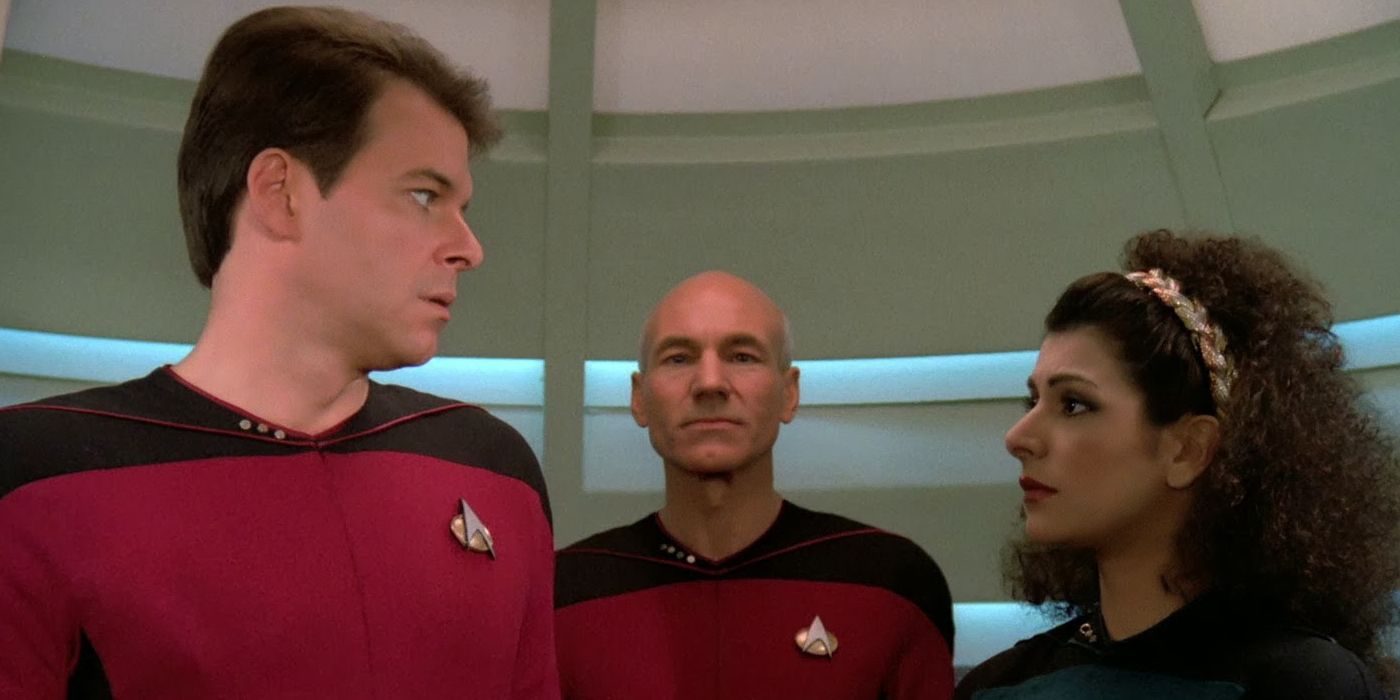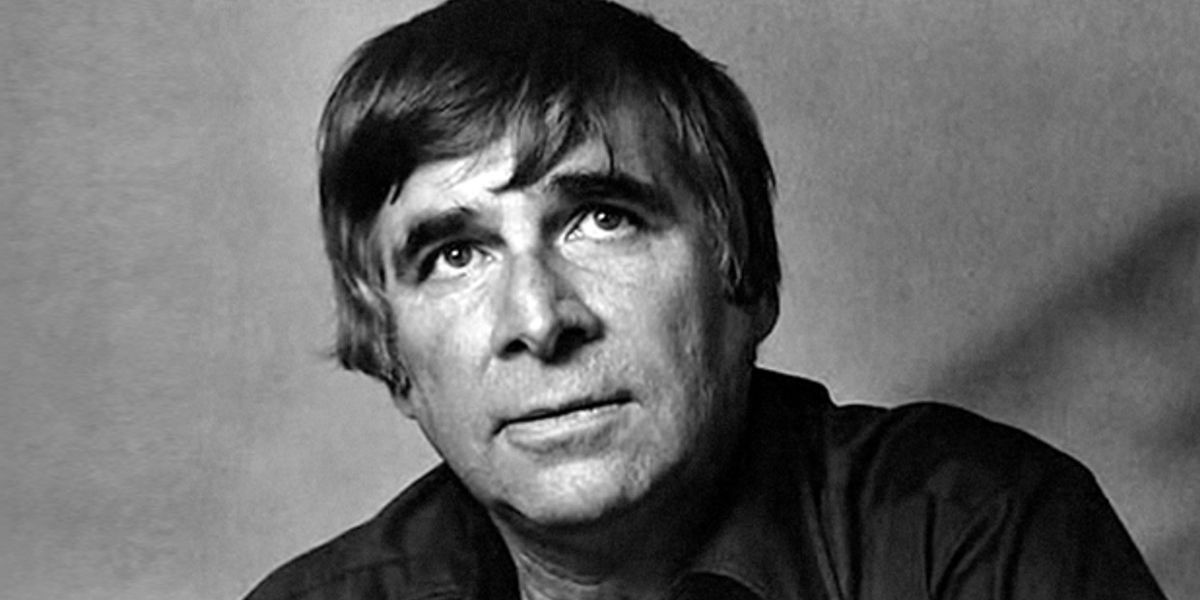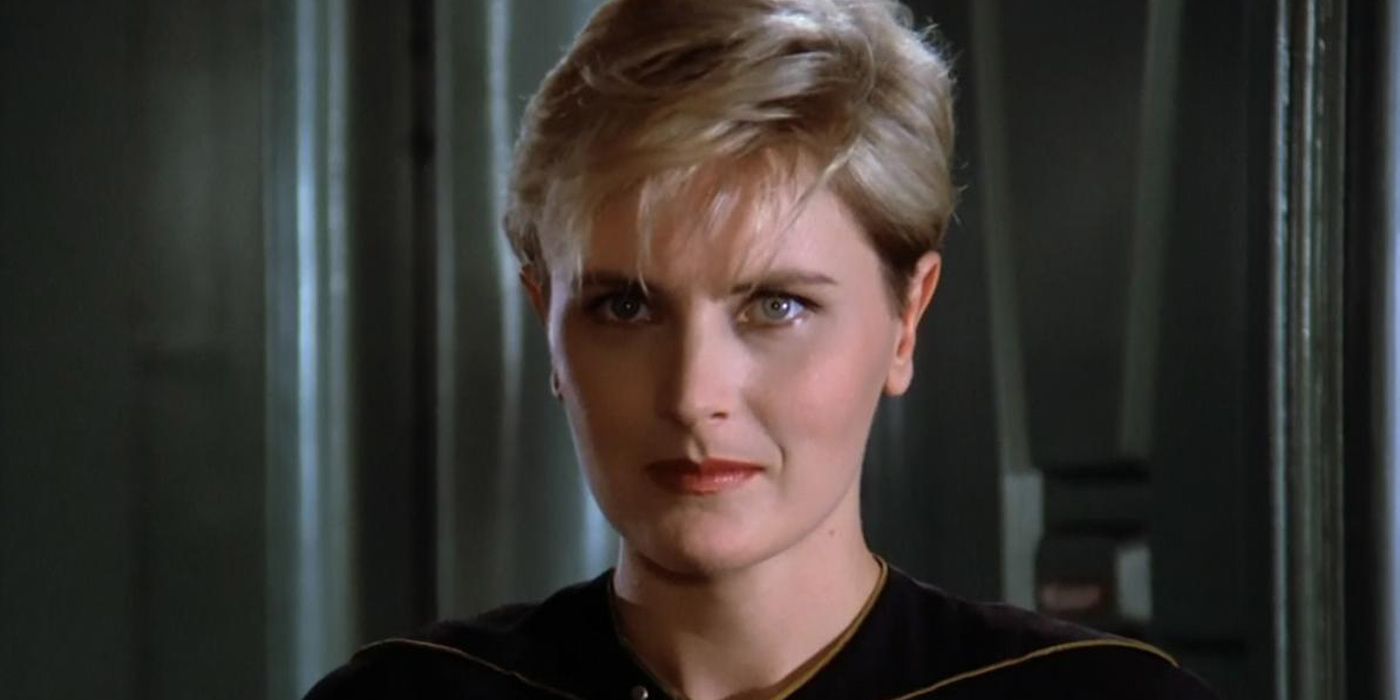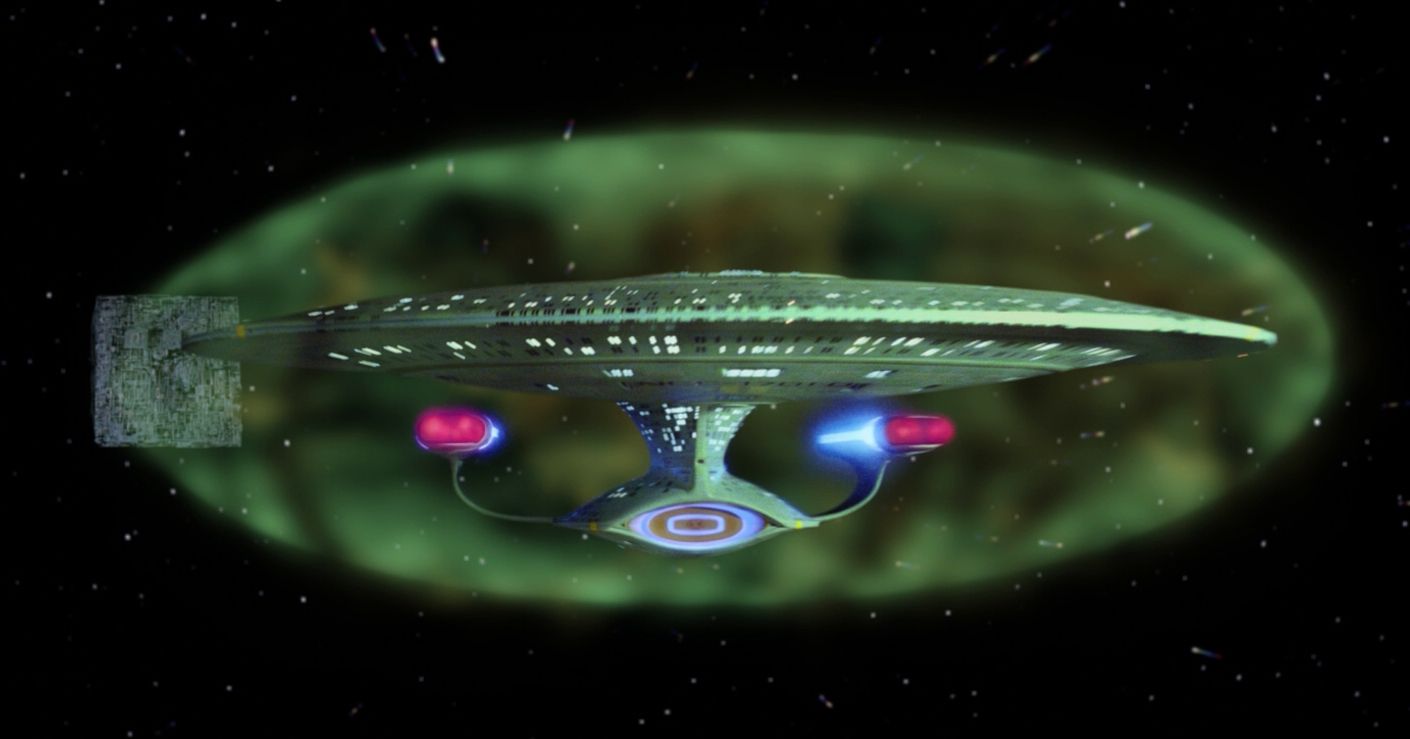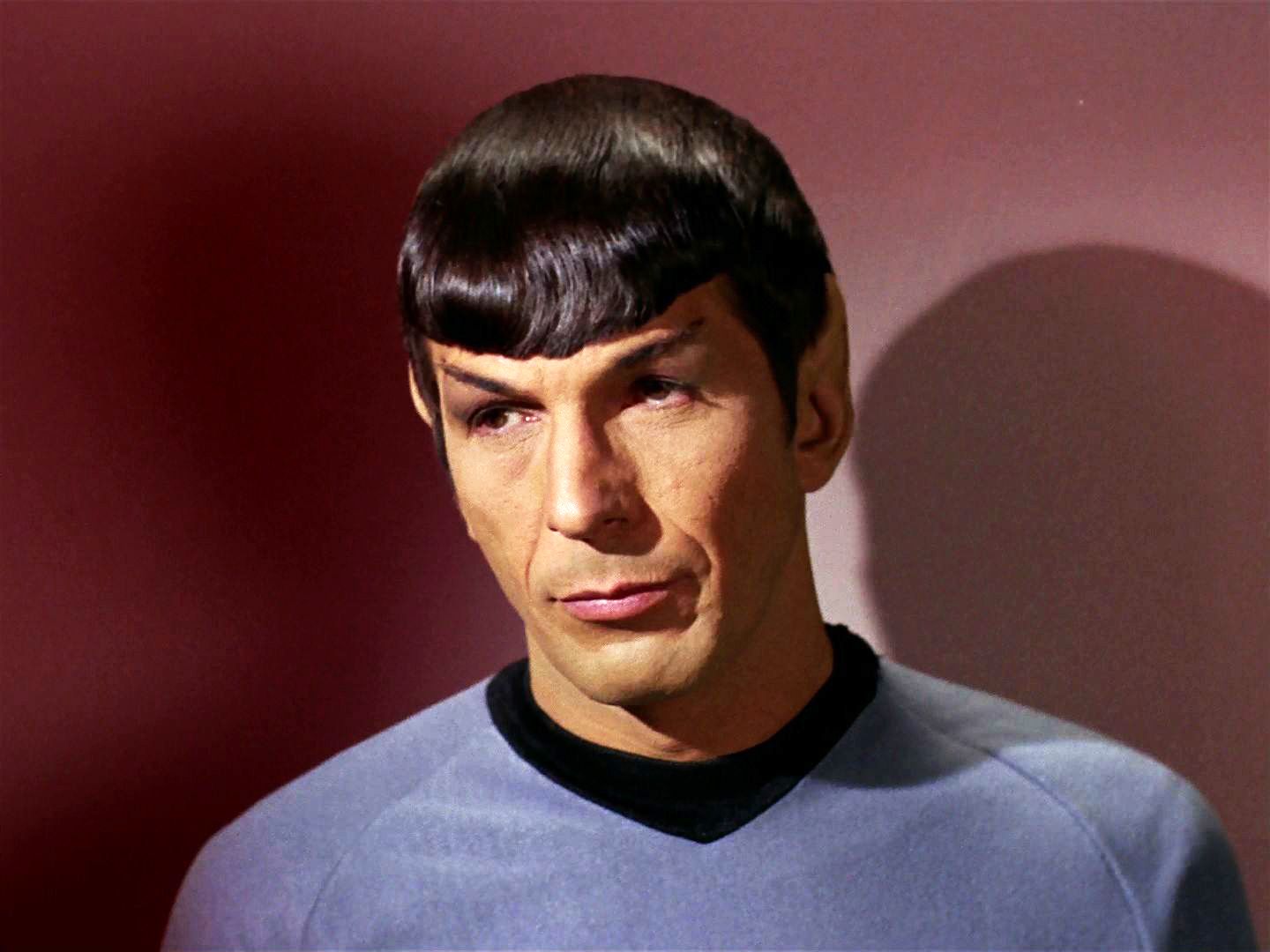Star Trek: The Next Generation was an amazing show. It was a worthy follow-up to the adventures of the Original Series crew and it helped usher an entirely new generation of fans into Trek’s world of boldly going where no one had gone before.
However, it’s an open secret that Next Generation became much better over time. The series had a truly rocky start, and looking back, it had one of the worst first seasons of any series, and definitely the worst first season of a Star Trek show.
Many fans have spent quite a few years trying to get to the bottom of why this was. Some point the finger at actors who were not yet sure how to best portray their characters. Others point to the scripts which often seemed confused as to what this new kind of Trek was all about. Finally, some pointed their fingers at the man who started it all, Gene Roddenberry.
It’s tough to figure out who the real culprit was. Regardless, there are many secrets about that weird first season that few fans know.
Go fire up your holodeck as we tell you all about Star Trek: 16 Things You Didn't Know About The Terrible Season 1 Of The Next Generation!
It was the third attempt at a new Star Trek TV show
Most fans view Star Trek: The Next Generation as the triumphant return of Star Trek to TV. The series was often referred to as a “sequel” to the Original Series of Star Trek, and many people view the franchise moving in a straight line from one series to another. However, this was actually the third attempt at a new Star Trek TV show!
The first attempt was Star Trek: The Animated Series. This was a cartoon that brought our favorite Original Series characters back (complete with the original actors providing voices), plus some new characters. That cartoon and re-runs helped Trek become more popular in the 1970s, so Roddenberry started planning a new live-action series called Star Trek: Phase II. After the success of Star Wars, though, the Trek focus shifted to the big screen for nearly a decade.
Denise Crosby was almost Counselor Troi
Denise Crosby always seemed doomed on The Next Generation. Rumors abound of her wanting off the show for many reasons, but the truth is that her character felt redundant. The show had two security leads, and one of them was a Klingon. Why were we focusing on the human instead? Thus, her character of Tasha Yar ended up dying in season one - but things could have been very different!
Originally, Denise Crosby was actually auditioning for the role of Counselor Troi.
If that mental image seems weird, Troi was originally going to be a different character: a detached, Spock-like character that Crosby described as “a cool, Icelandic blonde.”
Meanwhile, Marina Sirtis was auditioning for Tasha’s role, but Gene Roddenberry personally decided to swap the two casting choices to better suit the strengths of the two actors.
Roddenberry didn't want Patrick Stewart
Somewhere along the way, Patrick Stewart became downright iconic. It’s almost to think about Star Trek: The Next Generation without thinking about Stewart, and to many, he’s still the most public face of all Star Trek.
As an actor, he brought serious gravitas to the role, but we almost didn’t have Stewart at all!
When Patrick Stewart first auditioned for the role, Gene Roddenberry did not like what he saw. At all. Stewart recalls their meeting not going well, but others people behind the scenes felt he was clearly the right call. According to Stewart, Roddenberry was eventually “worn down” and agreed to cast Stewart.
Fortunately, Roddenberry became very happy with the choice as the show went on. Stewart was happy too: he claims to have taken the job for an easy paycheck and assumed it would be canceled soon, but ended up giving it his all for years!
Riker was meant to be boring
If you could only describe William Riker with one quality, you’d probably say he was “the fun one.” In a show with super-scientists and emotionless androids, Riker was the trombone-playing, jazz-loving guy who found increasingly wacky ways to sit in every single chair.
Throw in all the romantic hijinks, and he’s clearly the crew member having the most fun.
This was not always meant to be the case, though. As star Jonathan Frakes recalls, Roddenberry originally wanted Riker to be more like “Gary Cooper... no smiling, all about honor and duty.” He said that this was one of the reasons his performance was “particularly stiff” in the first season, though he loosened up in later years. Maybe the fun-loving personality came with his new beard in season two?
Troi's powers were all over the place
In some ways, the character or Troi was the most surprising addition to the show. As cerebral as it could be, Next Generation was a sequel to The Original Series, which was conceived as a space western. In a world full of phaser fights, an empathic counselor was a strange choice.
She ended up being an amazing character, but in the first season, her powers were all over the place.
The most famous incident is in the pilot episode, where she can hold full telepathic conversations with Riker. The show never details whether she could do this with others or only him, and we never see her do it again.
Instead, they adjusted her powers downward to only feeling emotions, and even that was scattershot (with various aliens being difficult, or impossible, to “read”). To this day, it’s difficult for fans to explain the upper limits of her shifting powers.
"Wesley" Crusher was Gene Roddenberry's self-insert character
Unfortunately, Wesley Crusher (played by Wil Wheaton) ended up being the most disliked Star Trek: The Next Generation character. In retrospect, that is almost entirely the fault of the writing: Wheaton is a good actor, but he was given scripts where half the plot was “genius Wesley figures everything out at the end.” It was boring, it was repetitive, and it was most likely Gene Roddenberry’s fault.
The name “Wesley” actually came from Gene Roddenberry’s middle name.
Cast members remember him taking a special interest in Wesley’s character, which led to a fan theory that Wesley is not only a “Mary Sue” type character (perfect, child genius, always saves the day, etc.), but he’s Roddenberry’s representation of himself as a child. Wesley was essentially a self-insert character, so is it any surprise that fans turned on him?
The show often insulted the viewers
The first season of Star Trek: The Next Generation was definitely the worst season. If you ask fans why, though, there are many different answers. While many of them focus on problems with stiff acting and awkward scripts, there’s something else happening: the show was really insulting to its viewers!
Not insulting in a “you should trust your viewers more” kind of way - the show actually insulted modern viewers by frequently dissing the 20th century. Data offhandedly refers to French as an “obscure language” in one episode, implying French culture dies out. In another episode, they find cryogenically frozen people from the 20th century and spend the entire episode moralizing about how Earth got over their archaic ways. Basically, in trying to be distant and futuristic, the first season often came across as distant and alienating.
The Ferengi were meant to be the new Klingons
The Ferengi had a rough road on the different Star Trek series. They eventually became a major part of shows like Deep Space Nine, and characters like Quark are actually beloved. However, they started out as sneering, stooping space thugs, and no one could take them seriously.
What makes it that much worse is that they were meant to be the new Klingons!
In the Original Series, despite only appearing in three episodes, Klingons were the villains always lurking in the wings. Next Generation producers wanted to do something new, so they designed the Ferengi to be the new regular antagonists.
Fans were so disappointed at these non-threatening villains that producers went back to the drawing board and developed The Borg. Meanwhile, the Ferengi were turned into the charming uber-capitalists like Quark that we all know and love.
The cast thought "Code of Honor" was the worst episode
Normally, Star Trek: The Next Generation was a pretty progressive show. It championed the equality of all people and tried to present a happy and Utopian future. However, the first season episode “Code of Honor” was wildly racist and cast members have widely declared it the worst episode they ever made in seven years!
The plot involved a planet where things looked like tribal Africa, and one of the leaders kidnaps Tasha Yar, who can only secure her freedom with a weird girl-on-girl grudge match. The cast despised the episode. Patrick Stewart called it something to be “quite embarrassed” about, while Frakes called it “a racist piece of s---” and tried to keep it off the air. Meanwhile, Spiner and Dorn have agreed that it’s simply the “worst episode” of the show.
Wil Wheaton was one of the most famous cast members
As mentioned before, the character of Wesley Crusher is not exactly beloved by fans. He’s mocked for everything from his child genius self-insert status to his awful sweaters. Of course, this means Wesley actor Wil Wheaton gets a lot of guff, but would you believe he was one of the most famous stars of season one?
Once Patrick Stewart was cast, he became the “big name,” as he had appeared in higher profile movies like Excalibur and Dune. However, when the show started, most of the rest of the cast were relatively unknown to general audiences. The exception was Wil Wheaton, who had just starred in the successful film Stand By Me.
Unfortunately, his fellow cast members’ careers would only grow while he was often squandered by Star Trek’s bad writing for Wesley.
They recycled old stories
One of the obvious culprits of the first season being bad was the quality of the scripts. Some of this was due to the interference and rules of Gene Roddenberry, but there was also a simpler factor involved. Many of these scripts were just recycled ideas from other series!
The most obvious example is “The Naked Now,” in which the crew encounters the same weird “make everyone kind of drunk” virus from “The Naked Time” Original Series episode. Some less obvious examples include characters: Riker and Troi’s relationship is based on Matt Decker and Ilia’s relationship from old Phase II scripts (and those characters were previously recycled into The Motion Picture as well). And the Phase II Vulcan character Xon served as the basis for the android officer Data!
Pacing issues started with the pilot
Another one of those first season issues that really stands out concerns the pacing of episodes. There are certain interesting ideas and moments that are basically glossed over, while the show lingers on things that are downright boring. Some fans chalk this up the writing team adjusting to a new show or the network getting a feel for things. As it turns out, though, this goes back to the very first episode of the show!
“Encounter at Farpoint” director Corey Allen has a fast-paced directing style. It turned out to be a little too fast for the original script, resulting in producers adding scenes just to pad the episode out. These scenes were thrown together at the last minute and literally existed just to take up some screen time - a pretty bad pacing start for the series!
Roddenberry kept making the scripts worse with rewrites
Gene Roddenberry was a man of vision. That’s one of the greatest things about him—he was able to vividly conceive of a world as wonderful as Star Trek and then bring it to life. However, he had a specific vision for Star Trek: The Next Generation that ended up making the show worse most of the time!
As an example, he firmly believed that characters in this Utopian future would not have interpersonal conflict.
When he saw character conflicts or anything else that was different from his vision for the show, he would rewrite a script. This not only made scripts worse (everyone understands that conflict of some stripe is what makes good drama), but led to vicious fights between himself and the writers, leading to many writers simply leaving the show altogether.
The Cast had to steal food
Star Trek: The Next Generation managed to rightfully obtain its place as true prestige television. However, this wasn’t always the case. During the first season, they were very much a low-budget show that everyone thought would fail, which led to the cast doing some pretty desperate things.
According to Denise Crosby, Next Generation never had good food for the cast and crew. She described it as “the crap leftovers” while shows like Cheers “had all the good stuff.” Crosby’s solution was simple: she stole food from Cheers and brought it over to share with her cast and crew!
It’s a funny story from Crosby, but it’s also wild to imagine the cast of one of TV’s most successful shows being forced to steal food from other sets.
The Enterprise D had recycled designs
For fans of Star Trek, the starship Enterprise was always more than simply a ship or a setting. Instead, it was another member of the crew, with its own personality and style. That’s why it was so important to make the Enterprise look good for Star Trek: The Next Generation.
We ended up with an amazing, iconic design, but we also ended up with some artistic leftovers!
The ship was designed by Andrew Probert. This wasn’t his first rodeo, though, as he had worked on Star Trek: The Motion Picture. Back then, he’d worked on a new redesign for the Enterprise, but there wasn’t time to make it a reality (plus, fans were likely to want something like what was on The Original Series). So, when he designed the Enterprise D, his old ideas came out to play, ranging from plating design to the “landing pads” of the saucer section!
Roddenberry banned Vulcans
You’ll notice something very quick as you watch the first season of Star Trek: The Next Generation. While the show introduces many new aliens (such as the Ferengi), there aren’t a lot of classic Star Trek aliens on display. We have an ongoing Klingon in the form of Worf and some Romulans at the very end of the season, and not a whole lot in-between.
This was more of Roddenberry’s doing. He really wanted Star Trek: The Next Generation to stand out from The Original Series, so he banned writers from writing stories about Vulcans and other classic aliens. Notice we don’t see anymore Andorians or Tellarites until later shows after Roddenberry had passed away.
Roddenberry also wanted to avoid stories about war with the Klingons, feeling this would be too much of a re-tread.
---
Got any scoop on Star Trek: The Next Generation season 1? Beam over to the comments!

